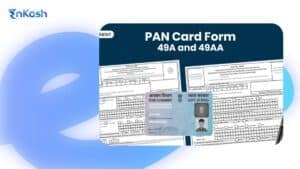Introduction
In business finances, accountants give top priority to assets. In accounting terms, assets are anything valuable owned by a company that helps it to earn income and keep its operations going. Among such assets, fixed assets are highly significant since these include long-term investments made for land, buildings, and machinery that businesses use for years.. In this blog, we will delve into what fixed assets are, what they mean in accounting, and how they are accounted for. We will also discuss fixed capital, types of fixed assets, accounting standards, and practical examples to make the concept easier to understand.
What is an Asset?
Before we explore fixed assets, it’s important to start with the basics and understand what an asset is in accounting. Simply put, an asset in accounting indicates anything a business owns that carries economic value and may generate some future benefit.
Asset Definition :
An asset in accounting is anything a business owns that has value and can help the company earn money or run its operations. If something will benefit the business now or in the future, it is considered an asset.
Asstes are among the most valuable resources that sustain a company’s operations and are the basis for the growth of that company over time. So, to answer the question “what does asset mean” in simple terms, assets are resources that provide income or sustenance to keep a business going. Assets in accounting terms can be anything, from money lying in a bank to raw materials, and may also be properties like vehicles, buildings, and machinery, or intangible items like patents and estates. Very broadly, assets can be grouped into two categories: current assets and fixed assets. While cash-based matters are under current assets that are expected to be converted into cash within a year, land, buildings, and heavy equipment are classified as fixed assets. These assets are not meant for speedy disposition but for long-term operations and sustainable business growth.
What are Fixed Assets ?
Fixed assets are long-term resources that a business owns and uses for more than one year to run its operations and generate revenue. These assets are not bought for resale—instead, they help the company operate, produce goods, or deliver services.
Fixed assets play a central role in accounting and business operations, so understanding their definition and meaning is essential. A fixed asset is defined as a tangible, long-term resource that is owned by a company and used for the generation of money and within the framework of doing core activities for itself. Current assets, such as cash and inventory, are bought for a quick turnover within a year. In contrast, fixed assets are not meant for the immediate sale or trade but are to be kept for several years in support of the day-to-day operations as well as the long-term growth of the company. The nature or the meaning of a fixed asset is usually associated with one word, durability, as they function together as assets designed to serve the company over a long time and are, in a way, depreciating with time. These are land, buildings, office equipment, furniture, and vehicles, all directly or indirectly used towards production, distribution, or service. To put it in practical terms, machinery purchased by a company for a factory becomes a fixed asset since it supports production for a number of years.
Similarly, a corporate office building used to house staff or a delivery van for logistics would fall under fixed assets. These types of resources are vital in that they allow a company to operate effectively, while also being considered large capital expenditures for the long-term financial standing of the company. Proper management of fixed assets on an accounting basis will lead to the determination of an accurate financial statement, a fair value estimate, and assurance that the company adheres to accounting standards prescribed for fixed assets. They fall under the category of fixed capital and show how much of the funds of the company are invested in long-term investments and not readily available as short-term liquidity. Fixed assets form the infrastructural foundation of a business, enabling smooth, productive, and scalable operations. They are officially accounted for, depreciated, and tracked through good times and bad. Without fixed assets, building sustainable operations and scaling activities will be extremely difficult.
Why do fixed assets matter?
Production or Service Delivery
One of the primary reasons fixed assets matter is their role in production and service delivery. Machinery, tools, land, and buildings are essential for manufacturing goods, running offices, or providing services. Without such long-term assets, businesses cannot operate efficiently and properly service the customer.
Representation of Strength and Stability
Fixed assets also present an image of a financially strong business. A company with large investments in land, properties, or machinery is generally believed to carry more stability and creditworthiness. Lenders and investors consider heavy fixed asset holdings as evidence of long-term commitment and reliability.
In Support of Long-Term Growth
They differ from current assets that are quickly changing hands in the process of turning over. The fixed assets are supporting growth by making the company self-sufficient. For example, given a factory, a business can run operations without depending much on any external provider. This level of independence, in turn, keeps companies growing further with time.
They Help Calculate Net Worth
Fixed assets, in accounting, are instrumental in determining the net worth of a company. They do appear in the balance sheets and are subjected to depreciation before stakeholders can discern the actual value of a business. With that sort of power, fixed assets have become a useful tool for financial reporting and decision-making.
Meaning of Fixed Capital
For a thorough understanding of fixed assets, one must also understand what fixed capital is, as both are closely allied in accounting. Fixed capital is the money that the company has invested in purchasing long-term resources of land, buildings, machinery, and equipment, which will be repeatedly used in operations. In brief, fixed capital means the permanent investment made in durable assets, which are not meant for resale but rather for continuous use over many years. For example, any business expenditure in purchasing or erecting a factory would add to fixed capital, as this expenditure creates a resource for productivity and growth of the business. Fixed capital remains tied in fixed assets that can provide value over a considerably longer period, other than working capital, which changes as a firm manages its short-run needs, such as inventory or accounts receivable. The accounting system for fixed assets ensures that these investments are duly recorded, depreciated, and reflected on the balance sheet. The term also implies the importance of cautious financial planning because, once invested in fixed capital, the money becomes difficult to liquidate or to convert back to cash. Simply stated, fixed capital is the backbone of long-term stability for a firm.
Types of Fixed Assets Businesses Use
No matter how big or small a firm is, it always needs fixed assets to function systematically and grow sustainably. Long-term physical resources provide continuous value for years to a company. Unlike current assets, fixed assets are not supposed to be sold immediately to the best bidder. Instead, they have to be put into revenue generation and the sustenance of daily activities. Some of the more regularly invested-in fixed assets of businesses are listed below:
1. Land and Buildings
Another important asset is land and buildings. These constitute the foundation for practically every business. For an office, retail store, warehouse, or manufacturing plant, land and buildings provide the framework necessary for operation. Land is not depreciated, but buildings are depreciated over their useful lives so as to reflect actual wearing out. In property owning, we are talking about long-term stability on the balance sheet side of the company, while the property value may appreciate over time.
2. Machinery and Equipment
In the manufacturing business, machinery is at the heart of the production process. Equipment is an extremely broad term referring to anything in a service business: servers, computers, and technology infrastructure. These are the machinery and equipment enabling a company to produce and deliver its products or services efficiently. The level of performance of any company is highly determined by how well its machines and equipment are maintained and upgraded. Such assets are depreciated regularly, taking into account their actual use and replacement.
3. Vehicles
Vehicles are important fixed assets for businesses, particularly in logistics, distribution, or transportation. For instance, an e-business/company may use delivery vans for smooth product dispatch, whilst heavy trucks may be needed by a construction company. These are recorded as fixed assets and depreciated over the period of their expected life. Regular servicing and the right use of such vehicles will continue to provide value to the company.
4. Furniture and Fixtures
Furniture and fixtures tend to get overlooked when running a business. Office chairs, tables, storage units, partitions, lighting fixtures, and all other types of furnishings are fixed assets. Furniture, in itself, may not generate revenues, but it does set the stage for a professional and functional workspace for employees. Since these items last a long time, they are capitalized and depreciated within accounting records rather than being expensed immediately.
Fixed Assets Accounting: How It Works
Fixed assets accounting is an essential process for any business, as it involves maintaining records of assets for long-term use and inclusion in a company’s books for accurate reporting and compliance with accounting laws. When a company performs fixed asset accounting correctly, it presents its true financial health by reflecting the value of those assets that are contributing to the daily operations and to long-term growth. One very important reason why fixed asset accounting exists is to facilitate depreciation calculation, so that the cost of the asset is offset against its income over its useful life, enabling expenses to be correctly booked. An entity is able to credit the income statement with that expense that corresponds to the period during which it used the asset through depreciation, while in the balance sheet, assets are consigned at a fair value of the resources it holds at that time. Another important factor is adhering to fixed asset accounting standards, which vary in accordance with the national accounting regulations or perhaps the international accounting framework in place, for instance, IFRS or GAAP. The company must maintain detailed records for each asset in the interest of transparency and audit facilitation. The fixed asset records must therefore include acquisition cost, date of purchase, useful life, and accumulated depreciation. Every fixed asset, when acquired, entails a journal entry by which the fixed asset account is debited for asset addition, while the cash or bank account is credited to reflect the outflow of funds. This entry thus ensures the correctness of the balance sheet and cash flow records. Although fixed asset accounting is related to proper profit reporting, it also helps with planning, asset management, and investment for the future. By keeping track of and regularly updating fixed assets, businesses ensure that they utilize their resources to their best advantage, identify replacements or upgrades, and thereby secure financial stability over time, making fixed asset accounting a crucial component of business management.
Net Fixed Assets Formula
Fixed assets tend to lose value over time owing mainly to usage, wear and tear, or obsolescence. Hence, there is a dire need for businesses to have an account of how much their assets are at present; here, the concept of net fixed assets springs into action. It represents the book value of a company’s long-term assets after considering accumulated depreciation. The net fixed assets computation allows management and investors to understand how much value is still there in the company’s property, plant, and equipment. It is a very straightforward and common formula in accounting.
Net fixed assets = Gross fixed assets − Accumulated depreciation.
Gross fixed assets encompass the original costs of tangible fixed assets that are categorized as long-term, namely land, buildings, machinery, vehicles, and furniture. Accumulated depreciation refers to a decrease in the value of the asset over time resulting from usage and aging. For example, if machinery costing ₹10,00,000 was bought by a company and an accumulated depreciation of ₹2,00,000 was recorded against it, the net fixed assets value would be ₹8,00,000. This net figure helps accountants and managers to look into the present contribution of fixed assets to operations and to make decisions on whether they are to be repaired, replaced, or newly invested in. Knowledge of net fixed assets contributes to financial analysis, presentation of the balance sheet, and calculation of certain ratios that give insight into the health of the entity. For those companies that have advanced expense management platforms such as EnKash, it really makes the whole process of tracking an asset’s value, depreciation, and related investments simple and transparent.
Conclusion
Handling fixed assets manually can be very tedious and error-prone; thus, solutions like EnKash become a critical aspect. EnKash further eases asset purchases, automates the expense management process, and ensures compliance with fixed asset accounting standards. Having the facility to keep track of long-term assets on a smart platform like EnKash ensures sound financial decisions, improved resilience, and sustainable growth.












